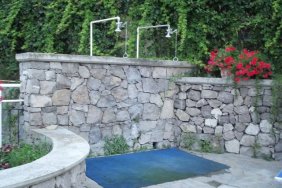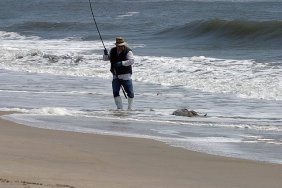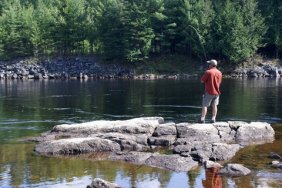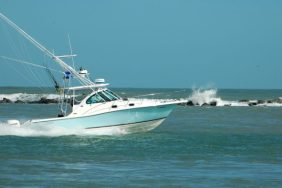 As we’ve explored in this series, there are several considerations to keep in mind in order to safely wade a river on your next fly fishing trip. Staying focused on the way you move, as well as utilizing extra safety gear will go a long way towards accomplishing this goal. Today, we’ll wrap up the series by identifying the different materials that can make up the river bottoms, and how to safely navigate them when wading.
As we’ve explored in this series, there are several considerations to keep in mind in order to safely wade a river on your next fly fishing trip. Staying focused on the way you move, as well as utilizing extra safety gear will go a long way towards accomplishing this goal. Today, we’ll wrap up the series by identifying the different materials that can make up the river bottoms, and how to safely navigate them when wading.
Sand and gravel bottoms are typically secure and for wading, so wade in such areas when you can. Cobbles tend to be more difficult because there are irregular surfaces to deal with and the surface of cobbles tends to be covered in muck or algae, which are easy to slip on. Aside from smaller cobbles, you may have to contend with boulders, which force you to navigate among the slippery cobbles just to find a way along the river. However, these larger rocks that may trip you or force detours may also provide relief from the current, which makes wading easier. Boulders also will hold pockets of sand and gravel, which cobbles don’t, and you may find secure footholds amidst treacherous footing. Once you learn to recognize these areas, they may give you an opportunity to move aggressively from a risky position to absolute security.
Mud bottoms may seem safe, but they may also hold many dangers. Firm mud or clay bottoms are very slippery if you’re using felt soles. If the bottom is flat, you probably won’t fall, but be careful that you don’t get stuck. Mud accumulates in slow-current areas, and logs and sticks left by floods may trip you. Furthermore, the silt you stir up will obscure your vision when you’re trying to see into the water. Finally, the erosion that occurs in muddy backwaters may create unexpected and slippery drop-offs, which can be dangerous.
One of the most potentially dangerous bottom types is bedrock, which consists of large solid rocks that have been polished smooth by eons of water erosion. This creates a collection of large, slippery surfaces that can have you swimming without warning. While cobbles are equally slippery, your foot can soon find a joint between rocks for a foothold, but on the large, flat surface of polished bedrock there is no forgiveness for a misplaced step. Even with careful sidesteps, if your foot slips it may skate so far out that you lose your balance and fall, so taking things slow—and even avoiding bedrock—is a good idea.
Fly fishing is a pastime enjoyed by many throughout the country, but being safe while enjoying it is a crucial element. With swift currents, treacherous bottom materials, and dangers like drop-offs or boulders to deal with, keeping your footholds and maintaining contact points is vital to staying dry. Hopefully, the tips outlined in this series will help prepare you for a season on the river!
.jpg?w=320)







